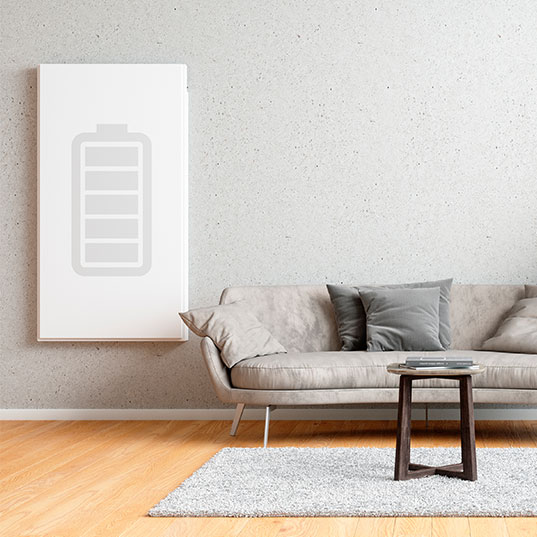The self-consumption of energy is on the rise. Solar panels are now commonly seen on rooftops, pergolas, canopies, and on land adjacent to buildings in both cities and towns.
However, this promising path to energy independence is not without challenges. One of the biggest hurdles is efficiently managing the surplus energy generated by residential PV systems. What happens to the solar energy that is not immediately consumed? This is where virtual batteries come into play.
What will you learn in this article?
- What is a virtual battery?
- Advantages and disadvantages of virtual battery
- Factors to consider
What is a virtual battery and how does it work?
A virtual battery is not a physical device you can touch or install at home. Instead, it’s a service provided by energy companies that allows you to digitally store surplus electricity generated by self-consumption systems, such as solar panels. When you produce more energy than you consume, these surpluses are “virtually” stored in the electricity grid.
“When you produce more energy than you consume, these surpluses are ‘virtually’ stored in the electricity grid".
Imagine you have solar panels on your roof that produce more energy on a sunny day than your home needs. Instead of wasting this extra energy, you feed it into the grid. Your energy supplier then records the amount of electricity you have contributed, creating an “energy credit” you can use when your energy production is lower than your consumption, such as at night or on cloudy days.
In practical terms, it’s like having an energy savings account. When you need to use these credits, the energy company will deduct the equivalent in kilowatt-hours (kWh) from your electric bill, leading to significant savings.
Advantages and disadvantages of virtual batteries
Beyond economic savings, virtual batteries offer several additional advantages:
- Sustainability: By maximizing the use of the renewable energy you produce, you reduce dependence on non-renewable sources and help lower carbon emissions.
- Energy Efficiency: Storing and using your surplus energy optimizes the performance of your solar panels, ensuring no energy is wasted.
- Flexibility: Virtual batteries allow for smarter energy management, enabling you to adjust your consumption based on weather conditions and usage habits. You can also use surplus energy from your primary residence in your second home, and vice versa.
- Safety: This system reduces the need for additional physical infrastructure, minimizing risks associated with wear and tear and equipment failure.
However, there are some disadvantages to consider:
- Limitations on use: Energy companies set restrictions on the amount of energy that can be stored virtually and the hours during which the service can be used.
- Additional costs: Although virtual batteries don’t require physical installation, they can incur extra costs added to your usual tariff. It’s important to ensure that the economic benefits outweigh these costs.
- Grid dependency: Unlike physical batteries, virtual batteries don’t store energy for later use. If there’s a power grid outage, you won’t be able to access the virtually stored energy.
What should I consider if I want to use a virtual battery?
Having a virtual battery in your home can be a good option for managing your solar energy efficiently and sustainably. Here are several key factors to consider:
1. Evaluate your renewable energy system
Ensure your current renewable energy system (such as solar panels or wind turbines) produces enough energy to meet your needs and generate a surplus to virtually “store.”
2. Financial aspects
Companies offering this service count the kWh generated in excess and pay you at the market price. The result is credited directly to your virtual battery, increasing your accumulated balance.
3. Monitoring and management
Choose management software with a user-friendly interface that allows you to monitor your energy consumption, generation, and virtual storage intuitively. Look for systems offering real-time alerts and notifications to keep you informed about your energy status and any potential issues.
Installing a virtual battery may seem complex, but with the right information and proper planning, you can enjoy more efficient and sustainable energy management.
Overall, by maximizing the use of the energy produced by solar panels, virtual batteries are presented as an innovative and affordable solution to promote self-consumption and energy efficiency in homes.
Journalist and content manager specialising in sustainability. Trained at the Carlos III University of Madrid, she works at the intersection between the environmental, the human and the organisational from a conscious and committed point of view.
Her texts seek to provide clarity and perspective, integrating a critical, conscious and documented look at the challenges of the present.
Collaborates in
Sustainability for allSpecializing in
Climate change
Sustainability
Environment